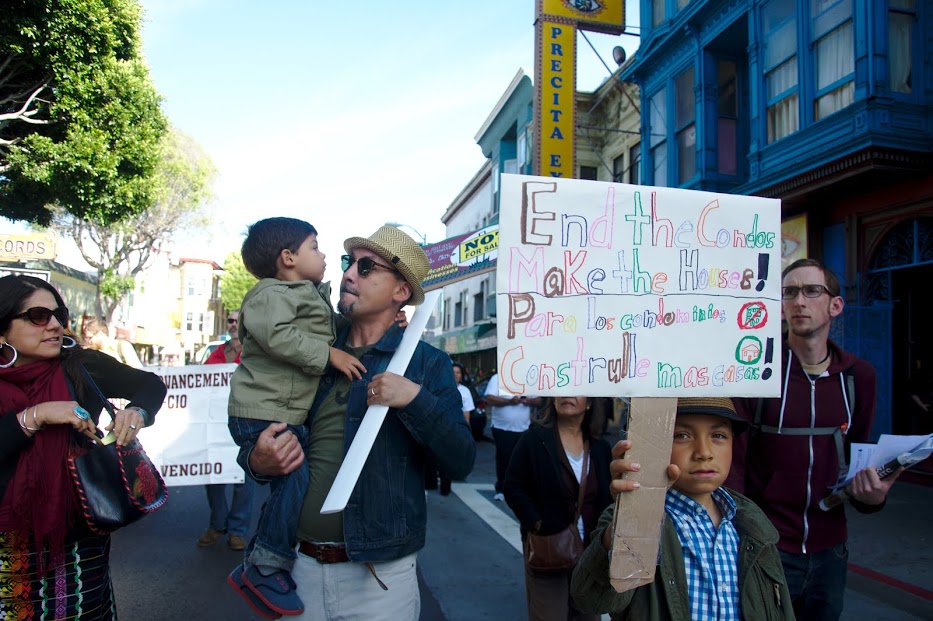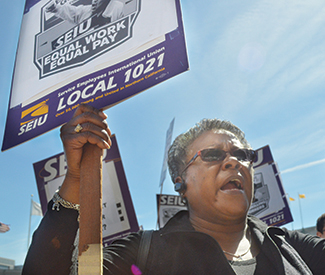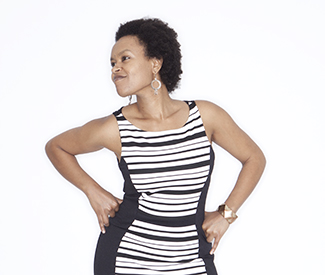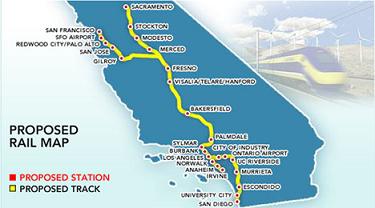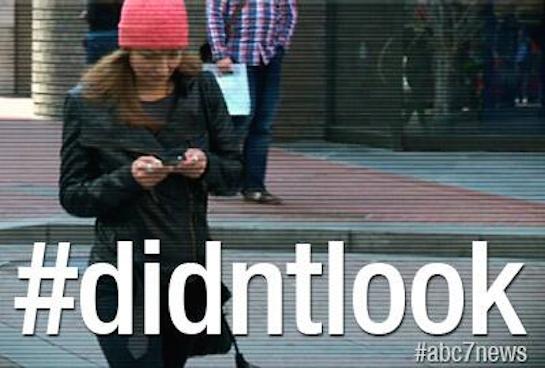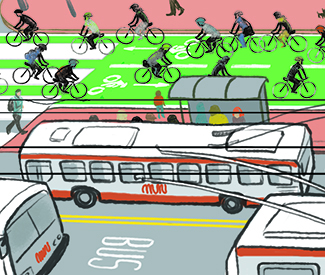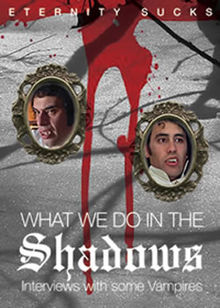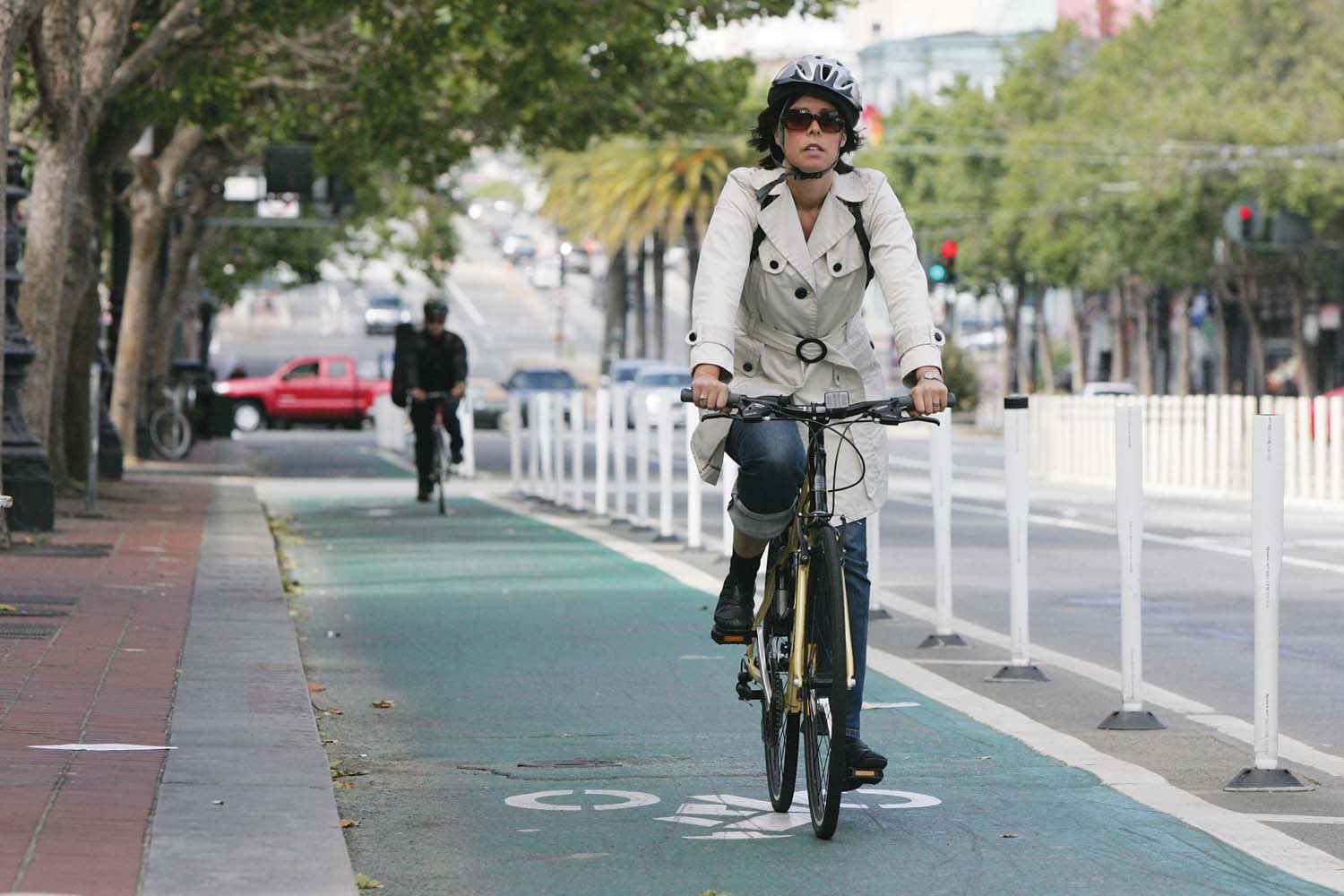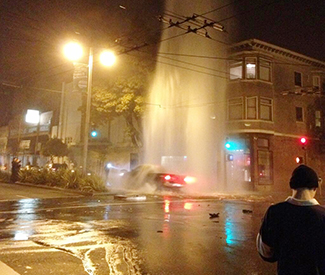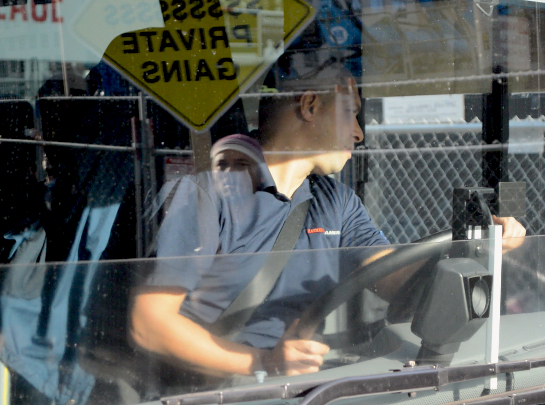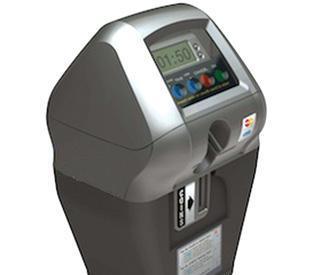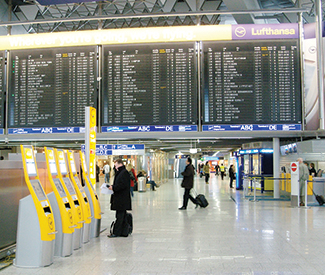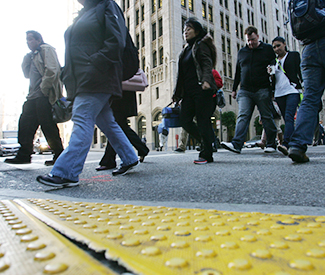WEDNESDAY 2
“WTF, SF? From Goldrushers to Glassholes”
Considering the sudden preponderance of fascinating panel talks concerning the state of San Francisco, it is safe to say that the dialogue between newcomers and longtime residents is officially underway. This talk, hosted by inimitable bookstore Green Apple and the charitable San Francisco Elks, promises to be extra kicky. Five big-time local cultural figures and authors — Gary Kamiya (San Francisco Magazine), Reverend Cecil Williams (Glide Memorial Church), Julia Flynn Siler (House of Mondavi), John Law (Burning Man), and Joel Selvin (SF Chronicle) — will meet in a town hall format to address the city’s shifting identity. Plus, cocktails! And a glimpse inside the gorgeous Elks Lodge No. 3, the “oldest continuously operating lodge in Elkdom.” (Marke B.)
6:30pm, $3 donation requested
San Francisco Elks Lodge No. 3
Third Fl., 450 Post, SF
“The Cambridge Turn: Recent Ethnographic Shorts”
The Pacific Film Archive wraps up a series mostly dedicated to documentarian and Harvard professor Ross McElwee with this shorts program featuring other filmmakers from McElwee’s Massachusetts stomping grounds. Author Scott MacDonald (American Ethnographic Film and Personal Documentary: The Cambridge Turn) appears in person at this screening of works by Lucien Castaing-Taylor and Stephanie Spray — known for their fest-favorite experimental works — as well as Cambridge veteran Alfred Guzzetti. Also of note is J.P. Sniadecki’s Songhua (2007), shot along the banks of China’s Songhua River. What begins as an observational document soon begins to intimately involve the filmmaker, as his subjects, mostly local vendors, appropriate his presence: “Who will buy a windmill as the American films me?” (Cheryl Eddy)
7pm, $5.50-$9.50
Pacific Film Archive
2575 Bancroft, Berk
bampfa.berkeley.edu
THURSDAY 3
The Cult
Singer Ian Astbury and guitarist Billy Duffy have led British rockers The Cult for three decades now, charging across the Atlantic with songs such as “She Sells Sanctuary,” “Sweet Soul Sister,” and “Fire Woman.” The group returned with their latest album, Choice of Weapon, in 2012, and toured around the world last year celebrating their 1987 record Electric. Bay Area fans are in for a treat as the band visits the city as a warmup for their two slots down south at Coachella later this month. (Sean McCourt)
With DJ Omar Perez
8pm, $45-$47
The Regency Ballroom
1300 Van Ness, SF
Lady Stardust
Lady Stardust, a San Francisco-based David Bowie cover band, is committing “Rock ‘n’ Roll Suicide” (aka playing their last show). As a girl-dominated cover band, the group will be performing the entirety of David Bowie’s magnum opus, The Rise and Fall of Ziggy Stardust and the Spiders From Mars, from start to finish. And for those who wanted to hear Prince and the Revolution’s “When Doves Cry” and Heart’s “Barracuda” all performed in one set, Purple Heart can satiate that desire — the band plays a strict regimen of Prince and Heart covers. Also joining for the cover-tastic night is Bones of a Feather, a band with a calling card for doing soul covers. So throw on some glitter and your tallest platforms, and come out for a night of what should be a “Moonage Daydream.” (Erin Dage)
With Purple Heart, Bones of a Feather
9pm, $6
Thee Parkside
1600 17th St, SF
(415) 252-1330
Thrillville’s 17th Anniversary-Farewell Bay Area Show
The rumors are true, Daddy-o: Will “The Thrill” Viharo, well-known to patrons of Oakland’s New Parkway Theater (not to mention the original Parkway) for programming the B-movie series “Thrillville Theater,” is leaving town. But he’s not saying aloha without throwing one last cinematic shindig, highlighted by a screening of his personal fave, the ever-quotable 1957 noir classic The Sweet Smell of Success. Pull up a couch, grab a beer, and toast a true original before he packs up for Seattle — where his wife will be attending grad school, and where he’ll be soaking up the rain as inspiration for his own pulp-fiction writing. (Cheryl Eddy)
9:15pm, $8
New Parkway Theater
474 24th St, Oakl.
Exploratorium After Dark: Wearable Technology
Wearable tech has been a hot topic in recent months, to say the least — but don’t write off these machines because of one woman’s tactless decision to wear her Google gear at a dive bar. The Exploratorium’s adults-only event will explore the countless possibilities for how technology can help us mere humans transcend our physical limitations. Think powered exoskeletons and adaptable, 3D-printed prosthetics that could help disabled folks or, you know, RoboCop. And what about LED couture (those awesome glow-in-the-dark and light-up garments worn by ravers and Lady Gaga)? So before we spark up the debate about the world’s first tech “hate crime” again, think about what wearable technology could mean for the future — and how it might change many people’s lives for the better. (Laura B. Childs)
6pm-10pm, $15
Exploratorium Pier 15
Embarcadero at Green, SF
(415) 528-4444
FRIDAY 4
Angry Samoans
Though old-school California punks the Angry Samoans have been playing for more than 35 years, don’t expect that they’ve matured at all in that long duration of time. Nope, continuing to tour with founding members singer-guitarist “Metal” Mike Saunders and drummer Bill Vockeroth, the band remains purveyors of short, loud bursts of hilariously offensive — yet sing-along-inducing— rock n’ roll. Come on, you know you’re going to yell out the lyrics to classic tunes such as “Gas Chamber,” “My Old Man’s a Fatso,” “You Stupid Asshole,” and of course, “They Saved Hitler’s Cock.” (Sean McCourt)
With M Section
9pm, $10
Thee Parkside
1600 17th St., SF
(415) 252-1330
Dying While Black and Brown
So far the Equal Justice Society hasn’t succeeded in abolishing the death penalty in California. But they have formidable forces behind them, and the momentum — at least we all hope — is growing. Two years ago, as a part of their campaign to restore the 14th Amendment to victims of discrimination, including those on death row, they commissioned Dying While Black and Brown from choreographer from Zaccho Dance Theater’s Joanna Haigood. The piece poetically examines the degrading effect of incarceration and death row on men of color. You can’t miss the work’s haunting tearing open of these wounds, but they do so because of the strength of Haigood’s sensitive choreography and jazz composer Marcus Shelby’s powerful score. (Rita Felciano)
April 4, 8pm; April 5, 2pm, free
ZACCHO Studio
1777 Yosemite Ave #330, SF
(415) 822-6744
SATURDAY 5
Emmylou Harris
Through her 45 years in the music industry, Emmylou Harris has been hailed as an icon in country, roots, rock, Americana, and the bluegrass revival; she’s worked alongside countless others, lending her distinctive voice and incredible musicianship to the likes of Dolly Parton, Roy Orbison, Willie Nelson, Neil Young, and John Denver, to name a few. Decades into her career, her voice is powerfully beautiful, and her songwriting is as strong as its ever been. Harris is a legend, and rightfully so. But hey, don’t take it from us. Just let her 13 Grammys do the talking.
(Haley Zaremba)
With Daniel Lanois, Steven Nistor, and Jim Wilson
8pm, $42.50
Warfield
982 Market, SF
(415) 345-0900
Muni Diaries Live
You know the old saying: What happens on Muni stays on Muni. Except for when you see something totally hilarious, sketchy, or gross, which — let’s be real, it’s Muni — you usually do. That’s when you post on Facebook about it, or tell all your coworkers or, if you’re the storytelling type, take it to Muni Diaries Live: an evening devoted to the “only in San Francisco” kind of weirdness that takes place on your daily commute. This edition’s storytellers include Chron pop culture critic Peter Hartlaub, i09 editor-in-chief Annalee Newitz, SF comedy scene favorite Kate Willett, and more. Bring your own Muni story and you’ll get entered to win gift certificates from Pizza Hacker, The Tens, and Ike’s Place. Bonus: this event is (almost certainly) guaranteed to smell better than the 47-Van Ness. (Emma Silvers)
7pm, $15
Elbo Room
647 Valencia, SF
SUNDAY 6
Gary Numan
Gary Numan’s success exploded with the release of his 1979 solo record The Pleasure Principle, which featured the hit single “Cars.” Inspiring untold New Wave, industrial, and goth bands with his sound and look over the ensuing years, Numan has been enjoying a resurgence as of late, and has found himself on stage as a special guest with groups such as Nine Inch Nails. His latest album, Splinter (Songs From A Broken Mind), came out last October, and finds him further honing in on a darker sound, collaborating with NIN guitarist Robin Finck among others. (Sean McCourt)
With Big Black Delta and Roman Remains
8pm, $29.50
Fillmore
1805 Geary, SF
(415) 346-6000
Dessert First!
Whether your sweet tooth sings to the rhythm of Bow Wow Wow’s “I Want Candy,” Warrant’s “Cherry Pie” or Kelis’ “Milkshake,” it’ll find the perfect date at Project Open Hand’s finger-lickin’ dessert party. Come with loose pants or carve an extra hole in your belt, because tonight, stuffing your face is not only welcome, it’s mandatory. Project Open Hand — a non-profit that prepares meals for individuals with serious illnesses and disabilities — has brought together a slew of talented dessert chefs for one night only. From the mouthwatering macaroons of Tout Sweet Patisserie, to the French delicacies by Bisou, to Dynamo’s delectable donuts, expect a myriad of tasty treats. While the desserts are the main attraction, the event will also serve creative cocktails and fine wines. Burn some calories on the dancefloor before going back for round two, and help support Project Open Hand at the silent auction; 100 percent of the proceeds benefit the non-profit. (Laura B. Childs)
5pm, $85
Four Seasons Hotel San Francisco
757 Market, SF
(415) 447-2300
TUESDAY 8
Dum Dum Girls
The Dum Dum Girls’ newest effort, Too True, is a bi-coastal record: Frontwoman Dee Dee Penny recently made the big move from LA to New York, but wrote the new record in some sort of in-between space. Not literally. She wasn’t in Nebraska, but rather in a haze, shuttling back and forth between coasts, hatching half-songs into the melodies that make up the strongly New Wave-driven album. “Do you hear Suede?” she asks of her listeners. “Siouxie? Cold-wave Patti? Madonna? Cure? Velvet and Paisley Undergrounds? Stone Roses? Cuz I did.” The resulting sound is not derivative, but fresh and grounded in strong melodies. The new material, like the old, promises to shine on stage, with Penny’s strong vocals and the rest of the Dum Dums’ tight musicianship. (Haley Zaremba)
With Blouse, Some Ember
8pm, $18
The Independent
628 Divisadero, SF
(415) 771-1421
The Guardian listings deadline is two weeks prior to our Wednesday publication date. To submit an item for consideration, please include the title of the event, a brief description of the event, date and time, venue name, street address (listing cross streets only isn’t sufficient), city, telephone number readers can call for more information, telephone number for media, and admission costs. Send information to Listings, the Guardian, 225 Bush, 17th Flr., SF, CA 94105; or email (paste press release into email body — no attachments, please) to listings@sfbg.com. Digital photos may be submitted in jpeg format; the image must be at least 240 dpi and four inches by six inches in size. We regret we cannot accept listings over the phone.


